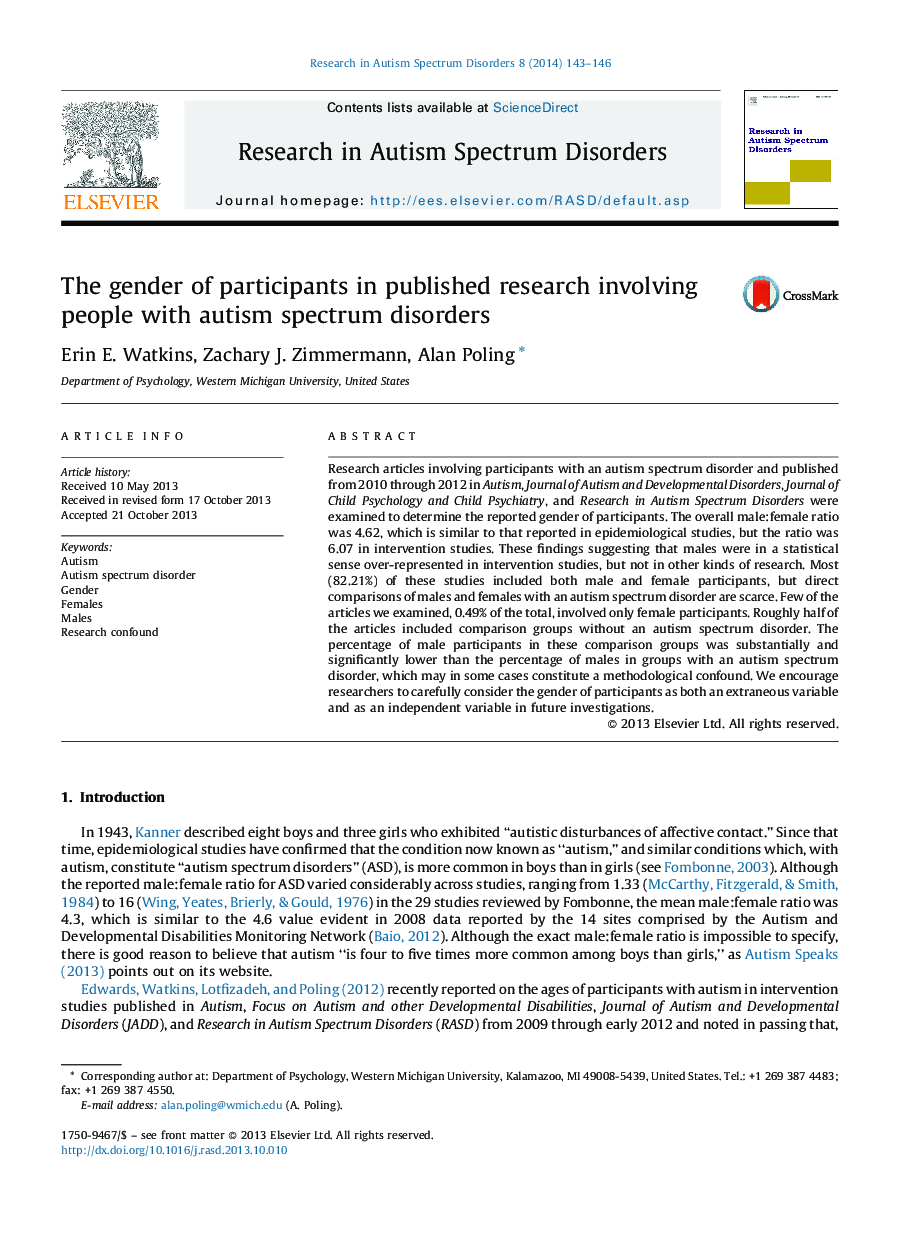| Article ID | Journal | Published Year | Pages | File Type |
|---|---|---|---|---|
| 370462 | Research in Autism Spectrum Disorders | 2014 | 4 Pages |
•We determined the gender of participants in recent studies from four journals.•The overall male:female ratio was 4.62; it was 6.07 in treatment studies.•Few studies (0.48% of the total) included only females.•Males were more common in groups with ASD than in comparison groups.•Gender merits attention as an extraneous and an independent variable.
Research articles involving participants with an autism spectrum disorder and published from 2010 through 2012 in Autism, Journal of Autism and Developmental Disorders, Journal of Child Psychology and Child Psychiatry, and Research in Autism Spectrum Disorders were examined to determine the reported gender of participants. The overall male:female ratio was 4.62, which is similar to that reported in epidemiological studies, but the ratio was 6.07 in intervention studies. These findings suggesting that males were in a statistical sense over-represented in intervention studies, but not in other kinds of research. Most (82.21%) of these studies included both male and female participants, but direct comparisons of males and females with an autism spectrum disorder are scarce. Few of the articles we examined, 0.49% of the total, involved only female participants. Roughly half of the articles included comparison groups without an autism spectrum disorder. The percentage of male participants in these comparison groups was substantially and significantly lower than the percentage of males in groups with an autism spectrum disorder, which may in some cases constitute a methodological confound. We encourage researchers to carefully consider the gender of participants as both an extraneous variable and as an independent variable in future investigations.
